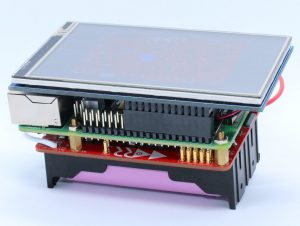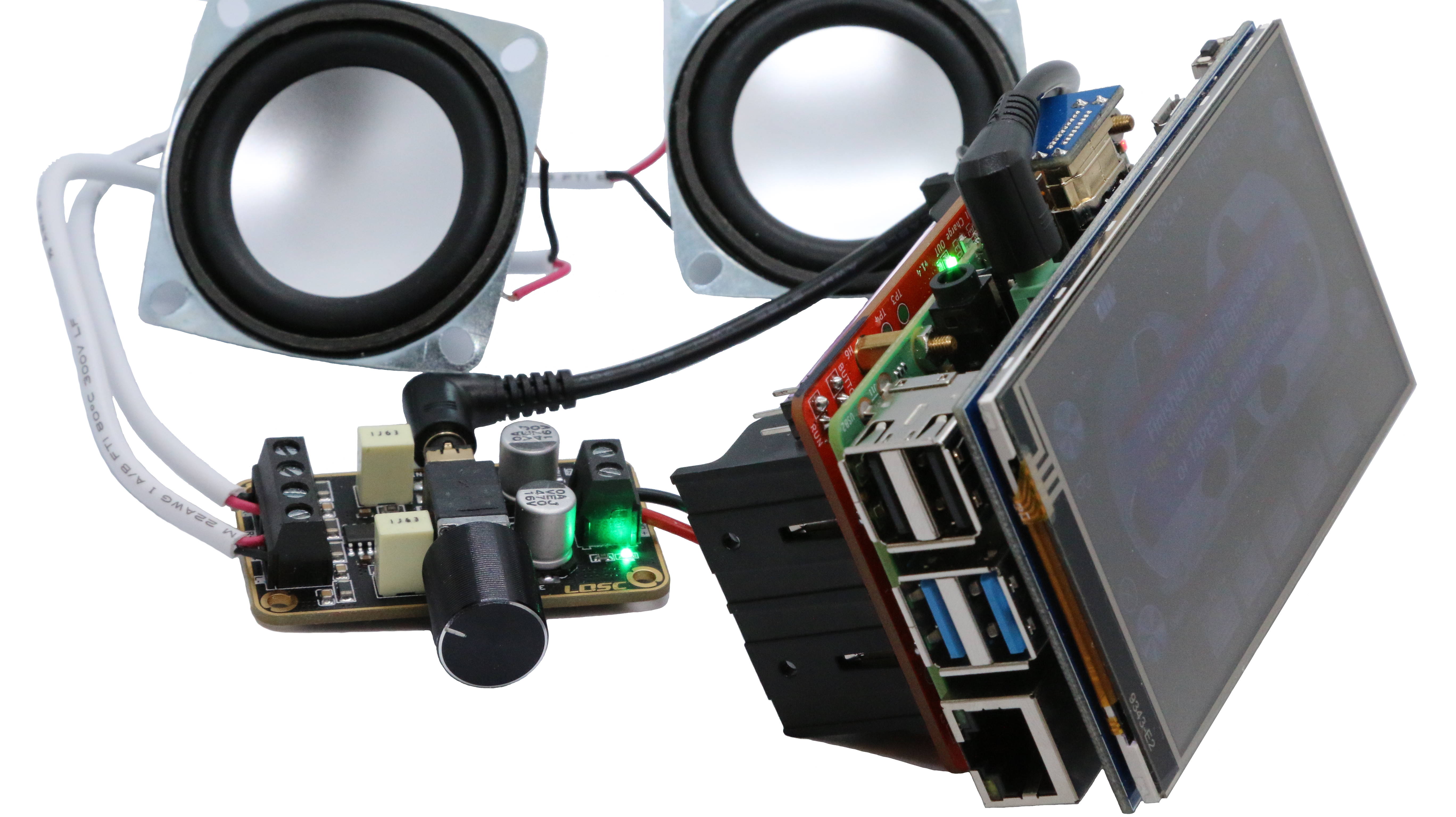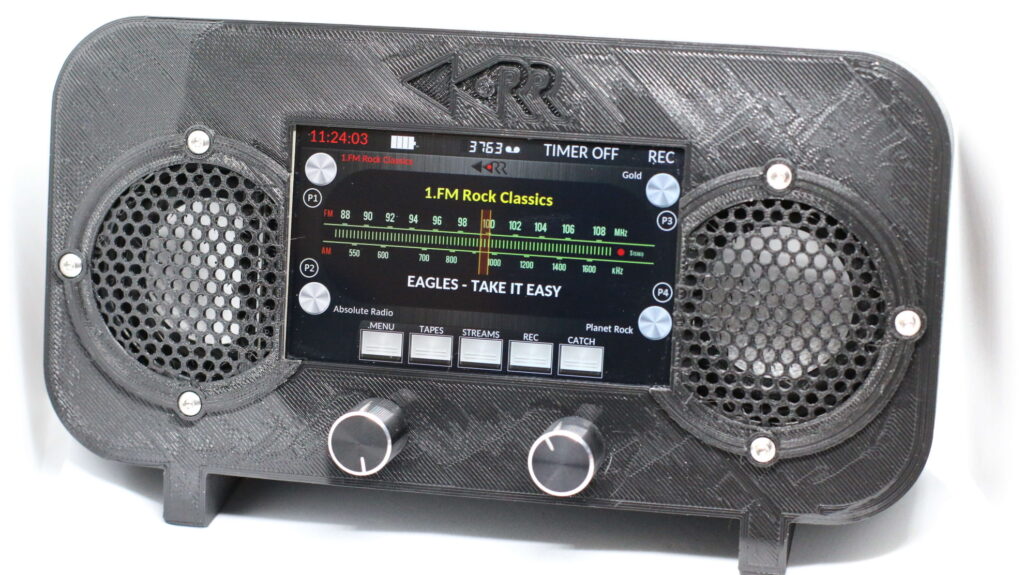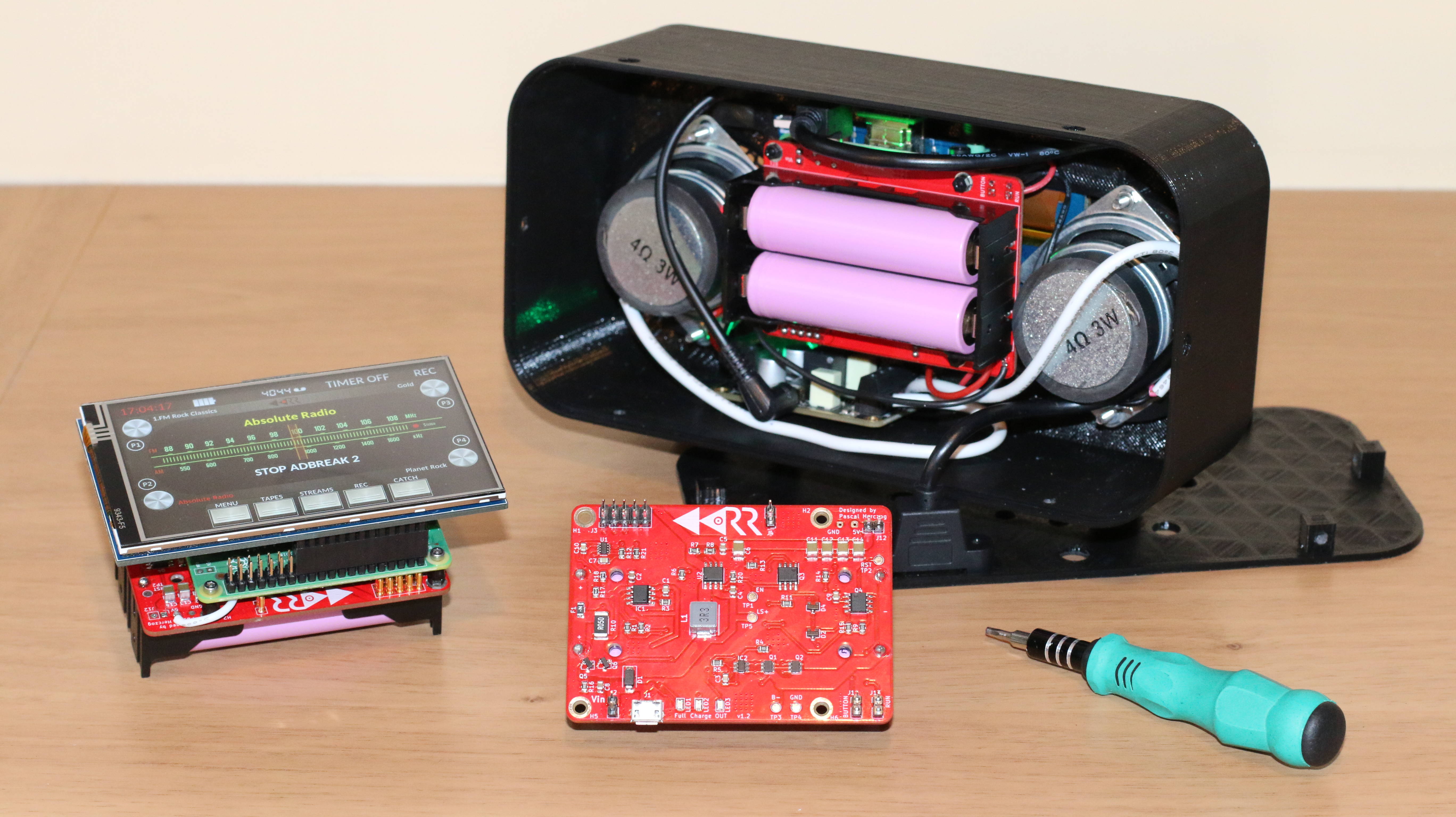Building a Portable Radio
You will have seen from our first post here that the Red Reactor design came from our internet radio product development, which you can see on www.replayradio.co.uk. It gives us a great opportunity to show you the Red Reactor in action!
The Raspberry Pi models are a fantastic way to learn Python programming, and use it to connect real hardware together to make a gadget. With so many readily available Python libraries for user interface development, audio systems, the GPIO ports, WiFi and Bluetooth controls it is easy to find examples and customise them to what you need.
For this design, we wanted to use a 4 inch touch screen that was directly driven through the 40-pin header of the Raspberry Pi and the HDMI port. Fitting the Red Reactor underneath the Pi gave us a very compact system to keep the complete design easily portable and fit on your computer desk. With all those hours spent in your computer study, it is amazing how much new music you can discover whilst working from home!
Whilst the Raspberry Pi can connect to external Bluetooth speakers, we also wanted a small audio amplifier and 2 inch speakers. The audio is routed through the digital HDMI interface to the display (avoiding the low quality analogue output on the Pi), which then provides the digital to analogue conversion into a 3.5mm jack.
The Red Reactor provides excellent power regulation, through a series of on-board capacitors designed to cope with rapid power peaks, and the separate power port means that both the DAC and amplifier get a very clean power input for a great sound.
The design is completely portable and can run off the Red Reactor batteries for at least 5 hours. The Python software uses the button and battery monitoring functions we posted to our Github page. Because this is threaded code it can be easily scheduled to run every 5 seconds alongside the python/Tkinter user interface, streaming radio and other tasks. When the battery monitor detects that the batteries are down to 3 Volts or there was a 2 second press of the ON/OFF button, the shutdown signal triggers the main software to cleanly stop any recordings and then shuts down the whole system. The battery monitor also measures whether external power is present, enabling the user interface to show the different battery levels and charging status.
The case was 3D printed and has a separate, internal frame that holds everything up against the inside front face, and a separate back plate with a USB socket for external power.
The ON/OFF button also doubles up as a Stand-By button, so a short press turns the radio into a bedside clock and powers down the amplifier. Fortunately there is also the 10 second press for a hard reset, which would save us having to unscrew the case to remove the batteries if it ever got stuck!
In a year of constant use the radio has never missed a beat, and the Red Reactor’s careful battery management means that the batteries are still going strong.
We’d love to hear about your projects and feel free to ask any questions about this radio or specific to your use case!







Wow – that looks so cool. When will you be launching that?
Thanks! Our focus right now is on launching the Red Reactor, but this board is also part of our radio design. We’re continuing to add software features but in the meantime you can already find and listen to nearly ten thousand radio stations via our https://www.replayradio.co.uk website, simply register there and search the radio database for any country and/or genre of music that you like, then click play! It’s amazing how many internet radio stations have almost or no adverts and just play good music!